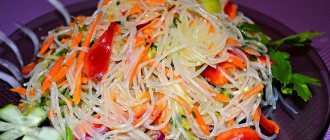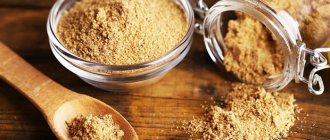Bulgur is extremely popular in India, Southeast Asia and the Mediterranean. There are many recipes for national dishes based on this porridge. But the product appeared in the CIS relatively recently, and many simply do not pay attention to it. But in vain - a lot can be said about the benefits and amazing power of oriental cereals. Read on to find out everything about the properties of bulgur and the possible harm from consuming it.
Nutrition against allergies during breastfeeding
Redness, irritation or severe rashes in a baby during breastfeeding are quite common and uncomfortable. And all this is caused by an allergy to certain substances coming from breast milk. Previously, it was believed that during breastfeeding a young mother could eat a strictly limited amount of natural products, but now these postulates have been revised and a hypoallergenic diet for nursing mothers is not something mandatory.
When is a hypoallergenic diet needed?
Now more and more pediatricians and neonatologists are inclined to believe that hypersensitivity reactions (as allergies are also called) are such an individual and independent process that it does not make much sense to strictly prohibit or limit certain products or ingredients. In simple words, even the most allergenic product may not cause a reaction in the most allergy-prone child, and vice versa.
Therefore, despite the fact that there is a clear gradation of products according to the degree of allergenicity and a genetic predisposition to allergies in a child, everyone can try everything, but by following some rules for the gradual introduction of new products. However, there are certain indications for an anti-allergy diet for nursing mothers:
- The first month of a child's life. It is believed that during this period the baby’s body goes through a critical stage of adaptation to environmental conditions. Plus, he has not yet received from his mother the entire set of antibodies and useful substances that protect him from aggressive external factors. Therefore, a child under one month of age is more sensitive to various types of allergens and can react to many substances;
- Presence of an allergy history in the mother or close relatives. For example, this could be a confirmed diagnosis of bronchial asthma or simply the presence of a seasonal allergy to flowering plants, atopic dermatitis, and the like;
- Genetic diseases of the digestive system in a child, in which the absorption of certain substances is impaired. For example, this may be celiac disease, in which the protein contained in cereals is not absorbed or cow's milk is not accepted by the digestive tract;
- Naturally, this applies to a situation where the child himself, based on feeding experience, often reacts with allergies to various foods, that is, it already becomes clear that he is prone to hypersensitivity reactions.
Different options for hypoallergenic nutrition during breastfeeding
As mentioned above, all products can be divided into high- and low-allergenic, taking into account the likelihood that the product will cause a reaction in the child. So, highly allergenic products include:
- Citrus fruits (mainly bananas, oranges and tangerines);
- Smoked products;
- Chocolate and cocoa;
- Strawberry;
- Honey and bee products (wax, pollen);
- Dairy products (including hard cheese);
- Spices and spicy vegetables (mustard, horseradish);
- Coffee;
- Caviar;
- Mushrooms, tomatoes, eggplants;
- Exotic fruits and vegetables;
- Confectionery;
- Eggs.
A number of products occupy an intermediate position. That is, the likelihood of developing an allergy when consuming them is average; they can be eaten in small quantities even by a nursing mother on a hypoallergenic diet:
We recommend reading the article about allergenic foods during breastfeeding. What substances can trigger the development of allergies in mother and baby, what components in products should be avoided during breastfeeding, you can read in more detail in this article.
Products and substances that rarely cause allergies
Low-allergenic products and ingredients include:
- Most types of cereals (especially buckwheat, oatmeal, pearl barley). Also recently, cereals such as couscous and bulgur, made from wheat, have become widely popular;
- Bran, bread based on durum wheat or flour. Coarse grind;
- Seasonal vegetables that do not have a bright color or strong odor (for example, potatoes, zucchini, cucumbers);
- Vegetable oils (sunflower, sesame, flaxseed);
- Meat beef, turkey;
- Legumes, soybeans, corn;
- Apples (preferably green varieties);
- some lactic acid products and soft cheeses (Sulguni, feta cheese).
Despite the fact that allergies are a very individual issue that depends on many factors, there are several simple rules for creating a hypoallergenic diet menu for a nursing mother. First of all, you should start trying each new product or substance with a very small amount. This will allow you to recognize the very first signs of the baby’s sensitivity and prevent it from developing into a full-fledged allergy, because the difference between redness on the cheeks and rashes all over the body is very large in terms of discomfort for mother and child.
It is also necessary to consume only products from the two lower sections, in no case (even in minute quantities) without introducing highly allergenic ingredients.
You should not eat imported fruits and vegetables, out of season or synthetic products - this will only increase the likelihood of a hypersensitivity reaction.
Sample menu
So, here are a few examples of hypoallergenic diets for nursing mothers for every day, from popular and widely available products in our country.
1. Breakfast:
Oatmeal with vegetable oil, low-fat yogurt or cottage cheese.
Afternoon snack:
Apple.
Dinner:
Boiled turkey or chicken fillet with potatoes and green peas.
Dinner:
Pumpkin, zucchini and rabbit stew (can be replaced with chicken or beef), cheesecakes or fermented baked milk.
2. Breakfast:
Sweet cottage cheese, bran bread toast, tea or dried fruit uzvar.
Afternoon snack:
Buckwheat porridge, fermented baked milk.
Dinner:
Boiled beef with couscous and cucumber.
Dinner:
Boiled sea fish fillet (pollock or flounder can be used) with oatmeal or vegetable salad.
3. Breakfast:
Apple and carrot pancakes, kefir or herbal tea.
Afternoon snack:
Brynza or sulguni cheese on wholemeal bread toast.
Dinner:
Baked beef (lean part) with corn and potato salad.
Dinner:
Potato casserole, green apple.
It should be noted that creating such a low-allergenic menu is not a difficult task; you just need to use your imagination with the available products from the bottom table. However, you also need to pay attention to the little things. For example, it is better to season salads with vegetable oil or sour cream, since, for example, vinegar, soy sauce and mayonnaise are prohibited. In general, you need to develop the habit of reading the ingredients of absolutely all products; often there may be unexpected synthetic compounds, preservatives, dyes, and so on.
Thus, it is obvious that nutrition that is healthy for both mother and baby can be quite varied and enjoyable; for this you do not necessarily need to stick to just buckwheat and apples. In addition, this may be relevant for those women who want to improve their figure and lose excess weight while breastfeeding.
This is due to the fact that almost all dishes and products from a low-allergen diet are low in calories, low in fat and healthy in themselves. Therefore, by eating this way, a young mother will kill two birds with one stone, and there is no particular need to infringe on her taste preferences.
GrudInfo.ru
Rules for eating porridge during lactation
During lactation, cereals are consumed as an independent dish in the form of porridge or as a side dish for meat or fish products. You can also eat cereal soups - buckwheat, rice, millet. First, completely gluten-free porridges with water are introduced. This is the diet for the first 90 days. Then they try to introduce cereals containing a small percentage of gluten. From the fourth month you can cook porridge in water with half and half milk. After the first six months of the baby’s life, it is advisable to introduce all the remaining cereals; cooking entirely with milk is allowed.
Is there anything to add?
Pediatricians allow a nursing woman to add dried fruits, green apples, bananas, and butter to any porridge. These ingredients can completely replace sugar in a dish. It is permissible to add salt to the porridge, but in moderation. As for vegetables, adding pumpkin or zucchini to your cereal product won’t hurt.

You can add hypoallergenic vegetables to the porridge - pumpkin or zucchini
The choice is yours
In the store, make sure that the bag of cereal is free of debris, broken grains, and powdery dust. The contents must be clean, uniform in color, and the package must not be torn. During lactation, it is better to buy premium products.
Bulgur - benefits and harm
Bulgur is a wheat grain prepared in a special way. Traditionally, dishes made from it are served as a side dish for meat, fish and vegetables. The benefits of bulgur for the body are due to its rich chemical composition.
Composition of bulgur
Bulgur is rich in B vitamins - thiamine, choline, riboflavin, choline, pyridoxine and folic acid, vitamin K (phylloquinone), E (alpha tocopherol), beta-carotene, trace elements - potassium, phosphorus, magnesium, calcium, sodium, iron, saturated fatty acids, mono- and disaccharides, fiber and ash.
Per 100 grams of dry product, depending on the type of wheat and the drying method, there are from 340 to 365 calories. Bulgur grain is useful even for those who are struggling with excess weight, but for this it is necessary to boil it in a large amount of water and not overeat. In addition, due to its high fiber content, bulgur porridge is beneficial for the body, as it quickly saturates and cleanses the intestines, improving the functioning of the digestive system. Minimal processing of bulgur allows you to preserve all the beneficial properties that this grain has and provides the body with the necessary nutritional elements.
Benefits of bulgur
The benefits and harms of bulgur have long been debated among adherents of a healthy diet. It is worth noting that this cereal is quite easily digested by the body, has a beneficial effect on metabolism and promotes the active removal of accumulated waste and toxins from the body. In addition, very often bulgur is preferred by people who are actively involved in sports.
Bulgur also has a positive effect on the nervous system. Vitamin B contained in this cereal, which is necessary for the normal functioning of the central nervous system, helps cope with insomnia, nervous tension, stress and irritability.
The mineral salts included in the product make it beneficial for skin, hair and nails. Bulgur is actively used in home cosmetology as a scrub. And in combination with olive oil, bulgur is an excellent remedy for massaging problem areas.
Bulgur has an excellent warming effect and is indicated for people suffering from diabetes. This is due to the fact that when it enters the body, this product is slowly converted into glucose, promoting the breakdown of fat reserves and normalizing blood sugar levels.
Harm and contraindications
Despite its fairly high popularity, excellent taste and benefits, bulgur also has contraindications. First of all, this applies to people actively fighting excess weight. As mentioned above, this product is very high in calories and should be consumed exclusively in limited quantities and only for the purpose of diversifying the diet. In addition, when losing weight, it is very important to actively exercise. Otherwise, this porridge will only add extra centimeters to your waist.
Gluten, which is present in the product, is a strong allergen, and therefore, people with individual intolerance to this plant protein are strictly contraindicated to consume bulgur. If ingested, it can cause flatulence, dyspepsia, weakness and drowsiness after eating.
Bulgur, the health benefits and harms of which are of interest to many, should not be included in the diet if you have indigestion, gastritis (especially with high acidity) and other inflammatory diseases of the gastrointestinal tract during an exacerbation. In addition, it is not recommended to include this cereal in a child's diet. If you follow these recommendations, this oriental cereal is a good alternative to usual dishes.
Related articles:
| Oatmeal - benefits and harm Nutritionists, and many supporters of a healthy diet, argue that you should definitely eat oatmeal in the morning. However, in addition to its benefits, oatmeal can also cause harm to the body. This will be discussed in this article. | Tea with ginger - benefits and harm Tea with ginger is the best drink for the cold season, as it has a warming effect and helps fight colds. But, besides this, it has many more useful qualities. |
| Ramson has many names. But the most important thing is that it is very beneficial for the body. In this article we will talk about the unique composition of this product, beneficial properties and contraindications. | Onions add piquancy to dishes and give food a new taste. But this vegetable can also be used for therapeutic and prophylactic purposes, as well as a cosmetic product to improve the condition of skin and hair. |
WomanAdvice.ru
Porridge during lactation: where to start
Porridge can be introduced into the diet of nursing women almost immediately after childbirth. These should be cereals with a minimum content of gluten (a plant protein that causes allergies). Give preference to rice, corn, buckwheat. All cereals are healthy. The main difference between them is the different content of fats, carbohydrates, microelements and proteins. But most of them are slow carbohydrates, in particular starch. They are digested and enter the blood gradually, providing a person with energy for a long time. In addition, cereals are a source of B vitamins. They are needed for the nervous system, beauty of the skin, hair and nails.
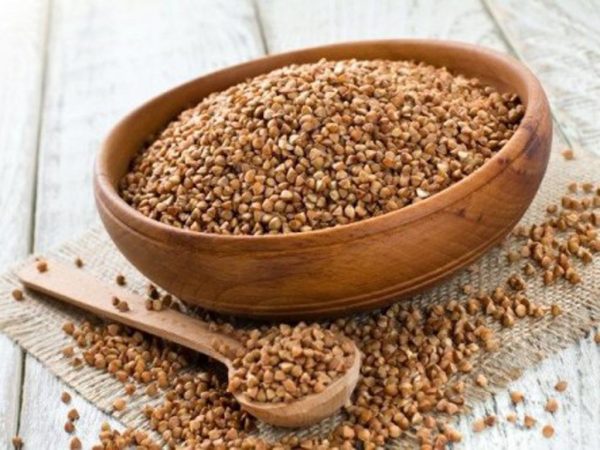
Buckwheat does not contain gluten and does not cause allergies
Rules for introducing into the diet
In the first three to four months of a baby’s life, porridge must be cooked in water; later, it can be cooked in milk diluted with water. But despite all the proven benefits of cereals during lactation, you need to introduce them gradually, 40–50 grams at a time, observing the child’s reaction. In the absence of rash, anxiety, or changes in stool, it is possible to consume cereal dishes with virtually no restrictions. The daily norm is 100–150 g.
Video in which Dr. Komarovsky presents his view on allergenic foods during lactation
Barley porridge
This cereal is not very popular and is not very healthy for a nursing woman. It is not absorbed well enough, is contraindicated for those with gastrointestinal problems, and does not contain many useful substances. And the gluten content is quite high. It is recommended to eat it no more than once a week and only in the second half of the child’s life.
Wheat porridge
A very healthy dish. This cereal improves immunity, is perfectly absorbed by the body, lowers cholesterol and, as a rule, does not cause allergic reactions. It can be administered with caution from the 4th month of lactation. Contraindicated for stomach problems and allergy sufferers due to the high percentage of gluten.
Oatmeal
A true champion of nutrients. Oatmeal contains a large percentage of plant fiber, which ensures uninterrupted intestinal motility and prevents constipation - a problem that is relevant for young mothers. The vitamins and antioxidants contained in oatmeal boost immunity, increasing the body's resistance to infectious and viral diseases.
What else is healthy about oatmeal:
- tocopherol;
- choline;
- retinol;
- riboflavin;
- folic acid;
- thiamine;
- ascorbic acid.
But at the same time, oatmeal cannot boast of being gluten-free, which means it is a potential allergy trigger for mother and baby. It should be introduced into the diet of a nursing woman no earlier than two months after childbirth, starting with a small portion cooked only in water. Preference should be given to whole grains, and then to Hercules flakes.
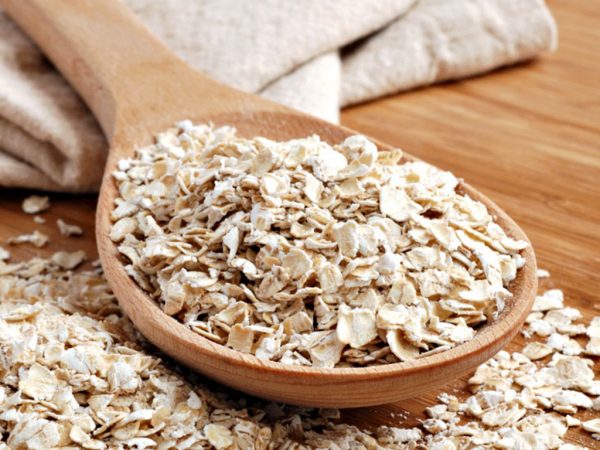
Oatmeal is one of the healthiest, but not 100% recommended cereals for lactation.
If you use instant oatmeal (just because it takes minutes to prepare), be aware that instant oatmeal already contains sugar and other additives. Carefully read the contents of the product on the packaging. Dry fruits (dried apricots, raisins) sold in stores also often have a large amount of sugar for better storage. So take this into account too.
Elena Berezovskaya
About oatmeal
Bulgur
An infrequent guest on our table. This is wheat cereal with the shell removed, steamed and dried, and then crushed. When cooking, it is better to fry it a little, then it will develop a subtle nutty aroma and taste. Bulgur has the same properties as wheat porridge. It is rich in vitamins B, E and K, phosphorus, zinc, iron, potassium, copper, calcium, sodium. It will undoubtedly enrich a woman’s diet during lactation due to unsaturated fatty acids, mineral salts and fiber. But despite all its usefulness, bulgur is a gluten-containing grain, which means it should be introduced into the diet no earlier than three months and with great caution. You should start with one spoon. If there is no reaction, the first portions should not exceed 50 grams no more than three times a week. The most preferred bulgur dish for a nursing mother would be a small portion of porridge cooked in water. It is easily digestible without harming weight.
Spelled
A forgotten healthy cereal containing many microelements: magnesium, selenium, iron, calcium, sodium, phosphorus. Plus vitamins - pyridoxine, riboflavin, thiamine. Spelled can normalize blood sugar and increase hemoglobin, which makes it a real find on the menu of young mothers. Spelled has no calories, but is nutritious. There is relatively little vegetable protein in it: 35 percent. It can be used in limited quantities and not earlier than three months by all breastfeeding women.
Poltava groats
This is a type of processed wheat cereal. Outwardly, it looks like whole peeled large grains.
What is the benefit:
- ensures normal functioning of the cardiovascular system;
- normalizes digestion;
- lowers cholesterol levels;
- improves brain activity;
- has a beneficial effect on the condition of the skin;
- removes salts of heavy metals;
- ensures the evacuation of waste and toxins.
This is a gluten-containing grain. Like wheat porridge, Poltavka should be introduced from the fourth month of lactation. Give preference to boiled in water. Start using a small portion, monitoring the baby’s reaction.
Dukan diet during breastfeeding and pregnancy
Women always want to be beautiful and slim, even during pregnancy or while breastfeeding a toddler. But how to properly adjust the diet so that the baby is fine and the mother loses weight? Undoubtedly, under such circumstances, starving and limiting your diet is difficult and dangerous, but there is a way out. This is the French Dukan diet for breastfeeding and pregnancy. In his book, the nutritionist describes in detail how to eat for new mothers and women bearing heirs; below you can read a summary of the methodology.
Video presentation of Pierre Dukan's weight loss method
About the weight loss program
The secret of Dr. Dukan's diet lies in the limited consumption of carbohydrates and the predominance of proteins in the diet, which is why this weight loss program is often called a protein diet. Why squirrels? The fact is that protein foods are excellently satiating, so people losing weight according to Dukan do not suffer from hunger attacks, they do not break down and do not overeat. In addition, proteins spend about a third of their calorie content to burn themselves, which cannot be said about carbohydrates or fats. The undoubted advantage of the method is the absence of restrictions on the amount of protein consumed per day and quick results. Dukan fans see daily weight loss; they don't have to wait for years to see themselves slim in the mirror. Such news motivates, charges with positivity and energy.
As for pregnant or breastfeeding women, Pierre Dukan recommends that they lose weight, regardless of how much excess weight is observed, by adhering (with minor amendments) to the diet of the third stage of his program, which is called Consolidation or Consolidation. Of course, the results will not be immediate, but you can be confident that nothing threatens your body and baby.
Meet Pierre Dukan - the author of the miracle technique
Authorized Products
The list of products for the Consolidation phase is quite impressive, there are about one and a half hundred of them, however, you may not find your favorite fried potatoes, dumplings or cakes on the list. But you have to come to terms with this, you want to lose weight, and not turn into a bun, right?
So, remember what you can eat:
- a group of dairy products with a fat content of up to 2% (milk, yogurt, processed cheese, granular or soft cottage cheese), mature cheese with a fat content of up to 40%;
- meat (turkey, chicken, beef, quail meat, liver and kidneys, rabbit, veal, ostrich meat, lean ham, dried lean meat);
- eggs;
- seafood, fish (not canned);
- vegetables and herbs (consume potatoes very moderately);
- whole grain bread;
- berries and fruits (except for grapes, cherries, figs and bananas);
- pasta (preference should be given to products made from durum wheat);
- couscous, bulgur, polenta, lentils, beans, peas, rice.
Vegetables must certainly be present on the menu of breastfeeding women.
Now you understand that the Dukan diet and pregnancy or breastfeeding are completely compatible, the main thing is to do this in strict accordance with the recommendations of a French nutritionist.
This is important to know! While losing weight according to Dukan, regardless of your situation, you should dress for the season and take a daily 20-minute walk. Without them, the program does not work, so you will have to get used to breathing fresh air.
Meat with vegetables is an excellent lunch for a nursing mother who wants to lose weight
Video lesson: how to find time for walks during the Dukan diet
Menu for weight loss during breastfeeding and pregnancy
Remember we talked about small adjustments to the Consolidation phase that are made for pregnant and breastfeeding ladies? We are talking about the following concessions:
- You can eat 2 servings of fruits/berries per day, and not 1, as at the Consolidation stage.
- Protein Thursday is canceled (Dr. Dukan advises ordinary patients to eat only proteins once a week for the whole day to maintain results, and in his opinion it is better to do this on Thursday).
An approximate daily menu for breastfeeding or pregnancy looks something like this:
- breakfast – omelet with ham, whole grain bread, tea;
- second breakfast - fruit;
- lunch - fish soup, salad, baked lean meat;
- afternoon snack – cottage cheese casserole with berries, tea;
- dinner - pasta, vegetable stew with turkey fillet.
Never forget about bran.
You should consume them 2.5 tbsp. daily Thanks to these tips, you will be able to say goodbye to extra pounds without compromising your health or harming your newborn.
fitladies.ru
What kind of cereal is this
Bulgar is essentially shredded wheat. In Russia, such cereals are called chaff.
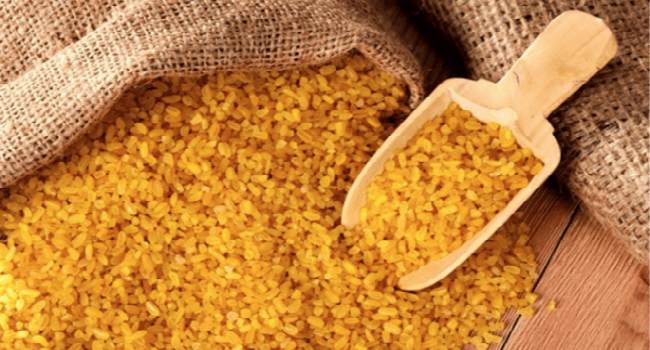
Made from wheat grain. During the production process, the grain is first boiled until it becomes soft. Then they are laid out to dry. After drying, the shell is removed and crushed.
Grains can have different grain sizes. There are 4 degrees of grinding. The smallest one is the first one. Rough - fourth. High-quality cereals are distinguished by grains of uniform size.
Any variety of wheat can be used to produce bulgur. But mostly they are made from hard ones.
Wheat has been domesticated since ancient times. It is believed that it was from then that bulgur began its history.
Cereals were used as food in ancient Greece, Eastern countries, and the Balkans. Later it spread to India and nearby countries.
Recipes for moms
Porridge has always been a part of the Russian diet. Many traditional cereal recipes have been preserved. Now you can find new ones for our table, for example, bulgur.
Classic oatmeal for breakfast
Rinse half a glass of cereal, place in a saucepan and add a glass of hot water or milk. Bring to a boil again, reduce heat to low and cook, stirring, for 8 minutes. Add salt at the end. After this, let the dish brew under the lid. Before use, add dried apricots, raisins, apples or bananas.
“Down” buckwheat porridge according to an old recipe
Pour a cup of washed buckwheat (sort if necessary) with two and a half glasses of cold water and cook for no more than 15 minutes, add salt at the end of cooking. Remove from heat, wrap the pan in a towel and put it in bed (in the old days in the oven), covering it with blankets for an hour and a half. Then add butter and a little sugar to the dish.
Bulgur with pumpkin in a slow cooker
Do not rinse the cereal. Place in a multicooker bowl and fry a little with butter until a slight aroma of nuts appears. Add salt, pumpkin, chopped into pieces or grated through a coarse grater, pour in cold water so that it completely covers the cereal. Cook on porridge mode.
Barley side dish
Sort out the cell, rinse with hot water and leave to soak for several hours or overnight. Then drain the water and lightly fry the cereal if desired. Pour a glass of grains with two mugs of boiling water and cook for 20 minutes on the lowest heat. Add salt, add oil, and let the dish steep under the lid on a warm stove.
Description of preparation:
To make the porridge not only healthy, but also tasty, I suggest taking note of the option of how to prepare bulgur porridge in milk with pumpkin, dried apricots and caramelized apple. If you wish, you can use other fruits to taste; raisins, for example, are also great. A very cool option, you won’t regret repeating it at home.
Purpose: For breakfast / For children / For breakfast Main ingredient: Dairy products / Milk / Cereals / Bulgur Dish: Hot dishes / Porridge Diet: Vegetarian food
Features of use
Normal for an adult
Start getting acquainted with bulgur with one serving, that is, 150–200 g of ready-made porridge. To ensure that the product brings only benefits, follow the recommendations of nutritionists:
- The optimal way to prepare cereal is to boil it in a large amount of salted water or soak it.
- Bulgur greatly increases in volume, so for 1 serving it is enough to take only 40 g of dry product. Despite the high energy value, the calorie content of 100 g of ready-made porridge rarely exceeds 80–100 kcal.
- It is allowed to diversify the diet by replacing the usual side dishes with bulgur 2-3 times a week.
For various diseases
Pancreatitis
Bulgur is allowed for pancreatitis, but only after the acute symptoms of the disease have subsided. Porridge cooked in water can be eaten in small portions 1-2 times a week, alternating with other cereals (semolina, buckwheat, oatmeal).
Cholecystitis
When the gallbladder is inflamed, you can eat wheat cereal, best in light vegetable soups or in the form of milk porridge. If you have cholecystitis, you need to eat often, in small portions, avoiding fat (lard, butter, vegetable oil) and large amounts of spices when cooking cereals.
Gastritis
During an exacerbation of gastritis with high acidity, it is better to wait a little while adding bulgur to the diet. The fact is that a large amount of fiber contained in cereals can irritate the inflamed gastric mucosa and cause even greater discomfort. After the pain subsides, you should eat wheat cereal 3-4 times a week. It is best to boil it until soft in salted water and serve it along with lean stewed meat.
Diabetes
Bulgur is an indispensable product for diabetes. In order to control sugar levels, it is recommended to regularly (1-2 times a week) add it to foods such as soups, salads and main courses.
When losing weight (on a diet)
Since bulgur has a relatively high calorie content, many people who are losing weight avoid it. However, the beneficial properties of the product, as well as its ability to stimulate the intestines and quickly saturate the body, make cereal an indispensable assistant in the fight for slimness.
Bulgur can diversify the diet of those on a diet if you add it to soups and salads or eat it as a side dish for meat. But you shouldn’t overuse it: it’s enough to use the product once a week.
For expectant mothers and breastfeeding
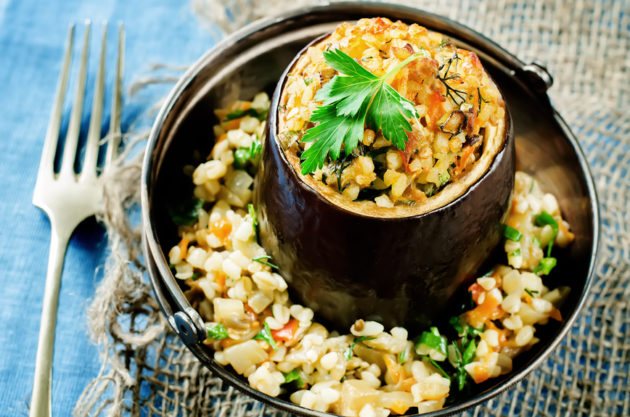
Bulgur with vegetables will saturate the expectant mother’s body with vitamins
Doctors recommend adding whole grain cereals, including bulgur, to a pregnant woman’s daily diet:
- in the 1st–2nd trimesters, a serving of lean meat and vegetables 2–3 times a week will provide the need for vitamins and microelements and prevent the development of anemia;
- in the third trimester, a large amount of fiber can cause bloating in a pregnant woman, so it is better to divide a serving of porridge into 2-3 doses and eat it in the first half of the day.
As for the use of bulgur during lactation, experts note that in the first month of a baby’s life it is better to eat gluten-free cereals (buckwheat, corn, millet). This is due to the possibility of developing allergies in the baby. Therefore, while the child is very small, it is better not to add the product to the usual diet.
From the age of one month, a nursing mother can try bulgur for her son or daughter. It should be cooked in water (whole cow's milk is a known allergen) and boiled until soft. Salt and sugar should be added to the porridge to a minimum. To make the dish more filling, you can flavor it with a small piece of butter.
Monitor the condition of the baby: if you notice a negative reaction to bulgur, manifested by restless crying, bloating, frequent passing of gas, then exclude the wheat product from the diet for at least a month. Later, when the baby’s digestive system becomes more mature, you can try to return healthy cereals to your daily menu.
Bulgur for children (at what age can a child be given and other nuances)
Wheat cereal will be an excellent vitamin food for a child over 1.5–2 years old. Bulgur dishes introduced into a child's diet before he reaches this age may be too difficult to digest and cause bloating. Preschoolers are allowed to add cereal to first and second courses and serve it as a side dish 3-4 times a week.

Bulgur porridge is a great option for a baby's breakfast.
Original recipes
We suggest preparing a delicious sweet porridge with milk and a dish with mushrooms. The first one is suitable for breakfast, and the second one will be a good choice for dinner.
With pumpkin and apples
A hearty and incredibly appetizing dish is a good way to start the day. It will charge you with energy and give you a feeling of fullness for several hours.

You will need:
- bulgur - 1/2 cup;
- milk - 1 glass;
- pumpkin - 100 grams;
- apple - 1 piece;
- ground cinnamon - 1 gram;
- sugar - 3 teaspoons;
- water - 1 glass;
- butter - 3 tablespoons;
- dried apricots - 50 grams;
- mint - 2-3 leaves;
- salt - to taste.
Preparation
- Fry the bulgur in oil.
- Pour in water and milk.
- Peel and dice the pumpkin.
- Finely chop the dried apricots.
- Add pumpkin, dried apricots, sugar, stir, bring to a boil.
- Reduce heat, cook for 20 minutes.
- Add salt and remove from heat.
- Peel the apples and cut into cubes.
- Fry the apples in butter with added sugar for 1 minute.
- Place the porridge on a plate, add apples, and pour over the remaining syrup from frying.
- Garnish the dish with cinnamon and mint leaves.
Bulgur with milk turns out crumbly, the grains do not stick together. Pieces of pumpkin, dried apricots and caramelized apples increase the usefulness of the dish, saturating it with vitamins and microelements. Spicy notes of cinnamon and mint complete the taste.

